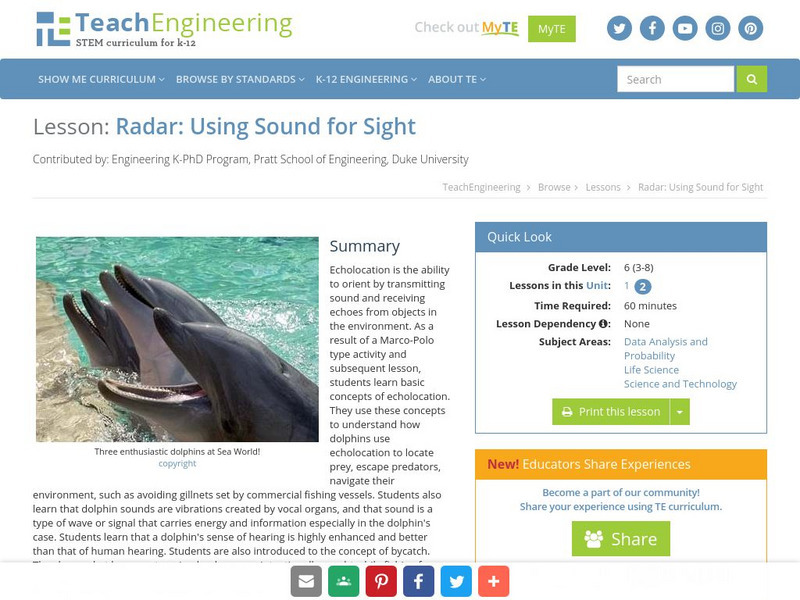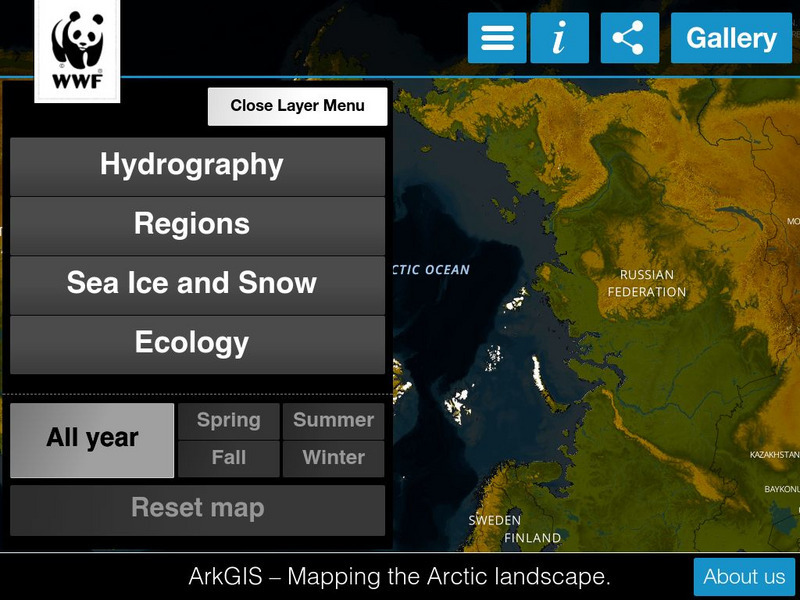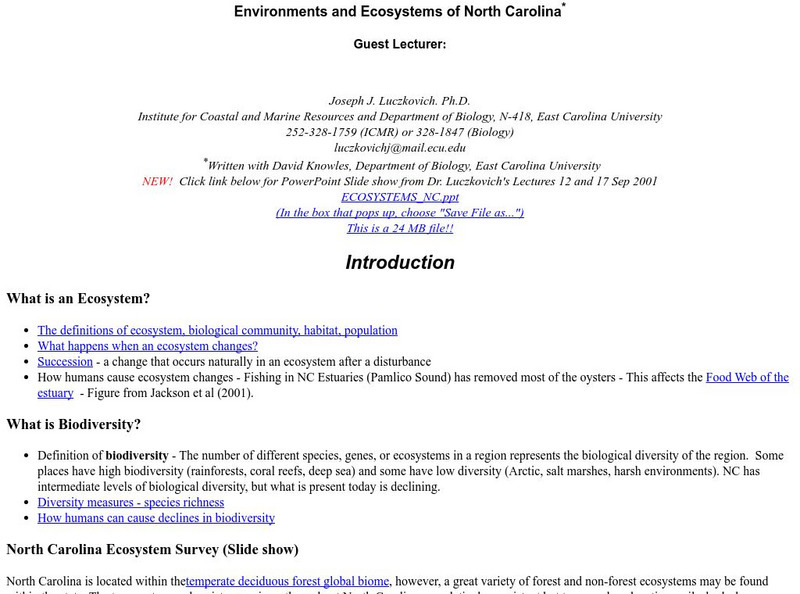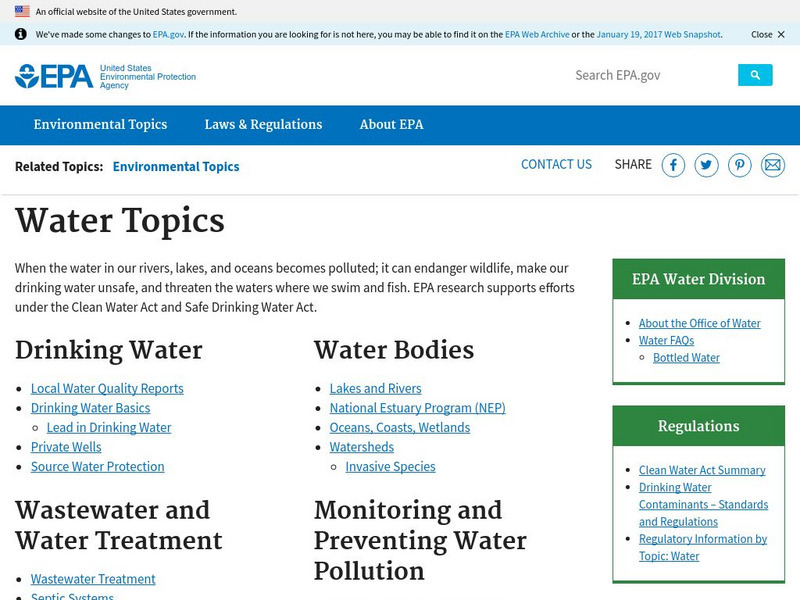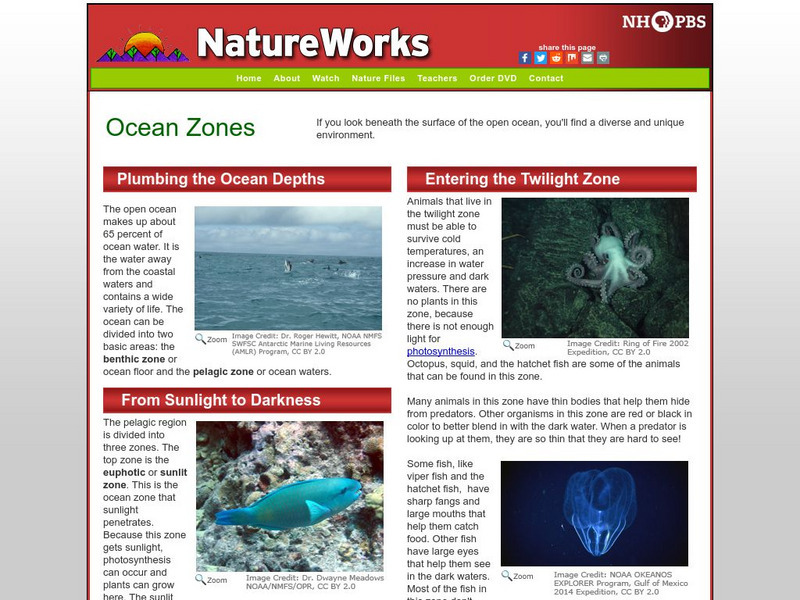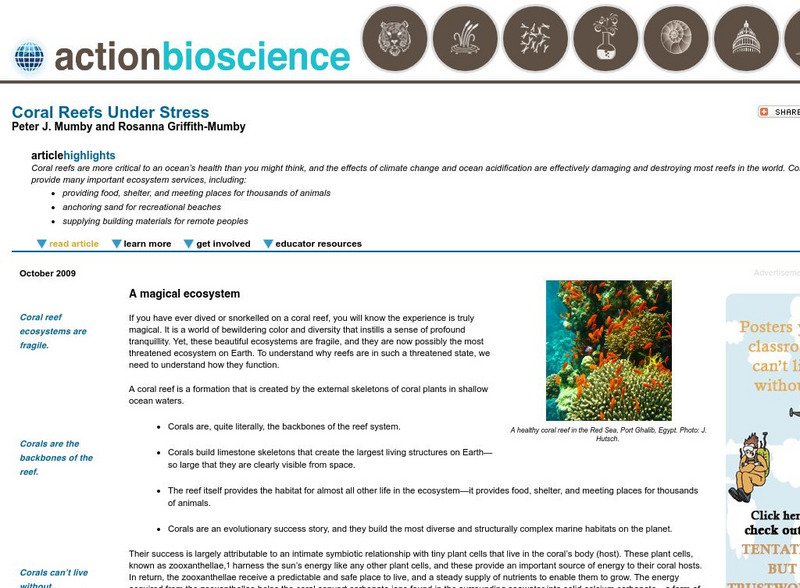TeachEngineering
Teach Engineering: Sound for Sight
Echolocation is the ability to orient by transmitting sound and receiving echoes from objects in the environment. As a result of a Marco-Polo type activity and subsequent lesson, students learn basic concepts of echolocation. They use...
Other
Ark Gis: Exploring the Arctic
Interactive mapping platform that combines and integrates existing data about the environment and human activity in the Arctic.
Other
Galapagos Islands: Wildlife Gallery
Great photos and descriptions of the wildlife in the Galapagos Islands. There are also links to information on the natural history, environment, and geology of these islands.
Science Education Resource Center at Carleton College
Serc: Investigating Rock Layers and Fossils to Infer Past
This activity is an inquiry-based field investigation of the sedimentary geology of Lilydale Regional Park's brickyards area, a bluff and slope location near St. Paul Minnesota's Harriet Island and Cherokee Heights Park. Students...
Other
Environments and Ecosystems of North Carolina
North Carolina is located within the temperate deciduous forest global biome, however, a great variety of forest and non-forest ecosystems may be found within the state. The temperature and moisture regimes throughout North Carolina are...
Scientific American
Scientific American: Oil Spills Leave Lasting Mark
This article, published by Scientific American (November 13, 2002), explores the lasting effect of oil spills on the environment.
US Environmental Protection Agency
Epa: Water Resources: Water Bodies
Learn about EPA's work to protect and manage water resources and what you can do to help.
Sea World Parks & Entertainment
Sea World: Manatees
Outlines the characteristics of the manatee, including classification, habitat, behaviors, and conservation. Helps students identify with manatees with a list of "Books for Young Readers." Information at a level of upper intermediate or...
PBS
Nh Pbs: Nature Works: Ocean Zones
Discover more about the underocean environment at this site that surveys animals, environmental factors such as light and temperature, currents, animals, plants, and the like.
Climate Literacy
Clean: Investigating Behavior of Krill
For this lab activity, students use brine shrimp as a substitute for krill to investigate how changes in environmental factors affect behavioral responses of krill in the unique environment of Antarctica.
Other
Planet Ark: World Environmental News
Welcome to Planet Ark's daily Reuters World Environment News - the most comprehensive source of environmental news on the Net. To read previous news stories, please use the search engine below to find stories relating to any...
Read Works
Read Works: Super Survival Skills
[Free Registration/Login Required] Students read about how different types of fish are able to defend themselves and survive in their environments. A question sheet is available to help students build skills in drawing conclusions.
Other
Eat the Invaders: Periwinkle
Periwinkles are a non-native, or invasive, species of mollusk along the eastern coast of Canada and the United States. Learn about their habitat, the history of their invasion, and the kinds of damage they do to their new environment....
TeachEngineering
Teach Engineering: Map a Buddy
This activity serves to introduce the concept of tracking and spatial movements of animals in relation to the environment in which they live. The following activity will aid student understanding of animal tracking and how technology...
San Diego State University
San Diego State University: Researching Research
This comprehensive unit site from the San Diego State University is geared towards seventh grade math and science students. "Students will chose a research project currently in progress and research it using traditional techniques, the...
Biology Corner
Biology Corner: Analyzing the Effects of Oil on Bird Eggs and Feathers
Students will observe the effects of an oil spill on feathers and eggs.
Smithsonian Institution
National Museum of Natural History: Ocean Planet: Oil Pollution
Source provides key facts and figures as well as pictures on various oil accidents. Site information is divided up into three categories: Sources, Accidents and Cleanups. This is part of an archived Smithsonian exhibit.
Other
Sea Anemones, Cnidaria
A resource with pictures that cover several types of anemones and their living environments.
American Institute of Biological Sciences
Action Bioscience: Coral Reefs Under Stress
Coral reefs, home to many vibrant plants and animals, are suffering from the affects of climate change and the increase of acid in ocean waters. Delve into the benefits and concerns of these beautiful ecosystems.
Florida State University
Florida State University: Collotheca (Rotifera) Movies
Select from one of two movies which depict a rotifer feeding while traveling slowly in pond environment. Background information is provided on rotifers in this interesting site.
ClassFlow
Class Flow: Plankton
[Free Registration/Login Required] This flipchart shows photographs and gives explanation of the two main plankton forms and their place in the environment.
Other
What Are Aquatic Nuisance Species and Their Impacts?
This site offers a basic explanation of what nonindigenous species are, their environmental and economic impacts, and public health concerns. Specific examples of nonindigenous animals and plants are given and the huge impact they have...
American Geosciences Institute
American Geosciences Institute: Oceans
Seven hands-on lessons module in which students explore oceans. Inquiry-based investigations include properties of seawater, ocean water and currents, and features of the ocean floor.
The Wild Classroom
The Wild Classroom: Biomes of the World: Coastal Ocean Biome
Learn about the coastal ecosystem. Find out about plants, animals, adaptations, and conservation efforts.
